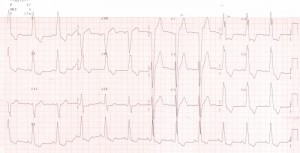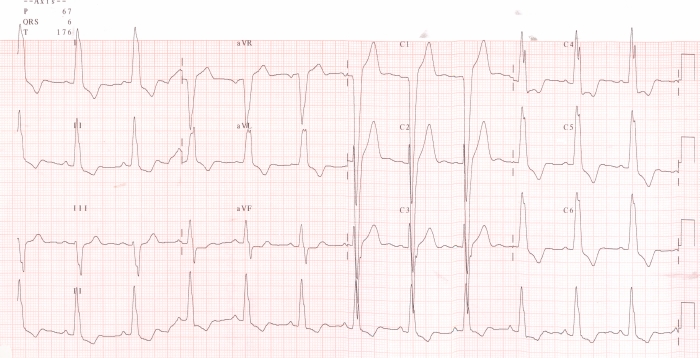Left bundle branch block
(Click on the image for an enlarged view)
Left bundle branch block is characterised by a wide QRS complex, more than 120 msec, with tall slurred R waves (M shaped) in lateral leads (I, aVl, V5 and V6) and QS complex in lead V1. The QS complex in V1 may have a W pattern. Since the initial left to right activation is lost in left bundle branch block, the initial q wave in lateral leads and the initial r wave in right precordial leads are absent. The ST segment and T wave are opposite in direction to the predominant QRS vector so that ST segment is depressed and T wave inverted in lateral leads with tall R waves. Vice versa, the ST segment is elevated and T waves upright in lead V1. This pattern is known as discordant ST segment and T wave in left bundle branch block (LBBB). If the pattern becomes concordant, it is suggestive of a primary myocardial pathology, like ischemia or infarction. Hence upright T wave in lateral leads (concordant) in LBBB is suggestive of myocardial ischemia / infarction.
If the QRS duration is less than 120 msec with the same pattern, it is often called incomplete LBBB. If there are prominent q waves in lateral leads or r waves in V1 in LBBB, it is suggestive of associated myocardial infarction. Unlike right bundle branch block (RBBB), LBBB is often associated with structural heart disease. A new onset LBBB in the setting of acute coronary syndrome is taken as equivalent to ST elevation myocardial infarction and taken as an indication for thrombolytic therapy.


